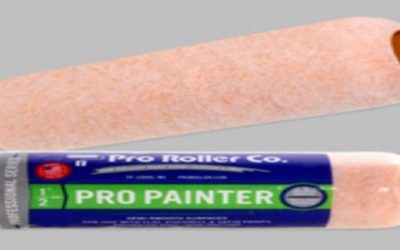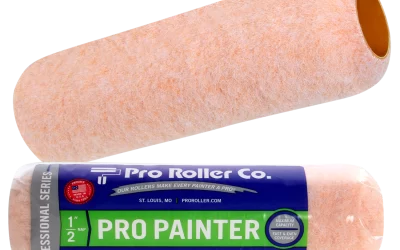When embarking on a painting project, selecting the right tools can make all the difference in the quality and efficiency of your work. Among the myriad options available, the lambswool roller stands out for its superior paint application and finish. Understanding how to choose the best lambswool roller for your specific needs can elevate your painting project from satisfactory to professional grade.
Understanding Lambswool Rollers
Lambswool rollers are favored for their natural fibers, which hold a significant amount of paint and provide a smooth, even application. Unlike synthetic fibers, lambswool is less likely to cause splattering, making it ideal for high-precision work. Here are some key features to consider when selecting a lambswool roller:
- Nap Length: Lambswool rollers come in various nap lengths. For smoother surfaces, a shorter nap (1/4 inch to 1/2 inch) is ideal, while rougher surfaces benefit from a longer nap (3/4 inch to 1 inch).
- Density: The density of the wool affects how much paint the roller can hold. A higher density means fewer trips to the paint tray, increasing efficiency.
- Size: Rollers range in width from narrow “trim” sizes to larger sizes. Choose based on the size of the area you are painting; larger rollers cover more area but may be cumbersome in small spaces.
Selecting the Right Roller for Your Project
To ensure you pick the best lambswool roller for your painting project, consider the following aspects:
- Type of Paint: Oil-based paints work well with lambswool rollers, as the natural fibers absorb and release the paint evenly. If using latex paints, ensure the roller is compatible to avoid fiber degradation.
- Surface Texture: Match the nap length of the roller with the texture of the surface you are painting. A mismatch can lead to poor paint application and uneven coverage.
- Durability: Opt for high-quality lambswool that can withstand repeated use and washing. This is particularly important for large projects or multiple jobs.
Practical Tips for Using Lambswool Rollers
- Preparation: Before using a new lambswool roller, prep it by washing it in water (for water-based paints) or the appropriate solvent (for oil-based paints). This removes any loose fibers and primes the roller for optimal performance.
- Cleaning: Proper cleaning extends the life of your roller. Clean immediately after use, using the right solvent for the type of paint you’ve used. Allow to air dry thoroughly before storage.
- Storage: Store your lambswool roller in a cool, dry place. For long-term storage, wrap the roller in plastic or a designated roller cover to keep it free from dust and debris.
Conclusion
Choosing the right lambswool roller is pivotal for achieving a professional finish in your painting projects. By considering factors such as the type of paint, surface texture, and the roller’s features, you can select a tool that not only enhances your painting technique but also contributes to a more efficient and satisfying painting experience. Remember, a high-quality lambswool roller not only applies paint effectively but also reduces the effort and time spent on your project, making it a wise investment for any painter.



